Captured on tape is talk of LaPierre’s desire to avoid public disclosure of his use of private jets as well as concern about persistent spending at the Beverly Hills Hotel by a PR executive and close LaPierre adviser.
During the meeting, which took place in the Alexandria, Virginia, office of PR firm Ackerman McQueen, executives agreed that Ackerman would issue a Platinum American Express card to Tyler Schropp, the new head of the NRA’s nascent advancement division, which was responsible for bringing in high-dollar contributions from wealthy donors. Ackerman would then cover the card’s charges and bill them back to the NRA under nondescript invoices.
“It’s really the limo services and the hotels that I worry about,” William Winkler, Ackerman’s chief financial officer, said. “He’s going to need it for the hotels especially.”
The use of the Ackerman American Express card, according to a report by New York Attorney General Letitia James’ expert witness on nonprofits, skirted internal controls that existed to ensure proper disclosure and regulatory compliance and to prevent “fraud and abuse” at the nonprofit. As a result, outside of a tiny group of NRA insiders, everyone was in the dark about years of charges by Schropp — who is still the head of the nonprofit’s advancement division — for luxury accommodations, including regular sojourns to the Four Seasons and the Ritz-Carlton. The NRA, in response, said the report was “rife with inadmissible factual narratives, impermissible interpretations and inferences, and improper factual and legal conclusions.”
James’ investigation into the NRA began in 2019, after The Trace, in partnership with The New Yorker, and later with ProPublica, reported on internal accounting documents that indicated a culture of self-dealing at the gun-rights group. In 2020, James sued the NRA and LaPierre, who presided over the organization for three decades, over claims of using nonprofit resources for personal enrichment, luxury travel and bloated contracts for insiders, allegations that the parties deny. The attorney general is seeking financial restitution from the defendants and was until last week petitioning for LaPierre’s removal, which was preempted on Friday when LaPierre announced he would resign at the end of January.
The attorney general’s office was unaware of the audio until it was contacted by The Trace and ProPublica and did not respond to a request for comment.
Ackerman McQueen and Winkler declined to comment. None of the other individuals mentioned in this story responded to requests for comment. The gun-rights group’s attorney, William A. Brewer III, said in an email: “The tape has not been authenticated by the NRA but, if real, we are shocked by its content. The suggested contents would confirm what the NRA has said all along: there were certain ‘insiders’ and vendors who took advantage of the Association. If true, it is an example of a shadowy business arrangement — one that was not brought to the attention of the NRA board.”
In the recording, Woody Phillips, who was the NRA’s top financial official from 1993 to 2018 and is also a defendant in James’ suit, did not say why the unusual credit card arrangement was necessary. But at one point, he indicated that LaPierre — whose public persona was that of a populist firebrand — had concerns about the optics of using NRA funds for travel on a private jet.
“We just have to be careful because Wayne wants to get through this whole year saying he hasn’t used private aircraft,” Phillips said. In that year’s tax filings, he explained, nonprofits, for the first time, would be required to disclose whether they paid for chartered flights for any of the numerous executives and officials listed in the documents. LaPierre, Phillips explained, “just doesn’t want to be seen getting off the plane — anywhere.”
In the opening statement by Phillips’ attorney on Jan. 9, he said that the NRA’s political activities caused “real and serious” security concerns. To that end, his client always “acted in good faith,” he said, and the questionable arrangements Phillips helped devise were not due to “a desire for secrecy” or “to keep information from the NRA and its board. But for confidentiality.”
LaPierre’s attorney spoke of his client’s unflagging devotion to the NRA and dedication to his job. “Was his thinking always right?” he asked. “No. Is perfection a standard for leading a not-for-profit? No.”
James’ complaint states that LaPierre “spent millions of dollars of the NRA’s charitable assets for private plane trips for himself and his family.” In a 2021 deposition, LaPierre said that “NRA security has a policy against me flying commercial because of threats,” and that the requirement had been in place for a decade or more.
In 2009, the NRA did indeed check the box on its tax filing indicating it had used “first-class or chartered travel.” The NRA’s explanation, which the Internal Revenue Service requires nonprofits to provide, was that “charter travel was used on occasions involving multiple events when reduced airline schedules precluded other options.” The description became the NRA’s standard template going forward. Other nonprofits, such as the U.S. Chamber of Commerce, disclose the names of executives who use the luxury service.
At the meeting, according to a source who asked not to be named for fear of professional retribution, Phillips, the NRA’s sole representative in attendance, was joined by Melanie Montgomery, an executive vice president at Ackerman McQueen, and Hillary Farrell, then the company’s chief operating officer. Winkler, from Ackerman, attended via videoconference.
The recording shows how the NRA used Ackerman, which devised the nonprofit’s most prominent messaging campaigns, as an extension of itself. The decadeslong relationship ended in acrimony and lawsuits. After evidence of the NRA’s self-dealing became public in 2019, the NRA and Ackerman accused each other of financial misconduct, with the gun-rights group claiming that the firm filed fraudulent invoices. In 2022, the two entities reached a settlement in which the NRA paid Ackerman $12 million.
In the recording of the 2009 meeting, Winkler said he was told that Phillips wanted to route Schropp’s pricey expenses through Ackerman McQueen, filing them as a “travel job,” which was billed to clients with an invoice that was devoid of detail.
“Well that’s easy,” Winkler announced. “As far as I’m concerned, we can give Tyler an Ackerman Amex. And do it that way.”
“Oh well that’s the way to do it then,” Montgomery replied.
“Yeah,” Phillips agreed. “That’s the easiest way to do it, and for the most part, it’s going to be stuff that Gayle books because it’s stuff with Wayne.” (Gayle Stanford was a consultant who handled LaPierre’s travel.)
“That aspect of it’s very easy,” Winkler said.
Phillips later said of Schropp, “Most of what he’ll do, he’ll do like he does here, where it’ll just be he’ll fill out an expense report for us, he’ll have cards for that too.”
Montgomery responded: “Woody just asked him, ‘Can you do some, you know, that goes through the NRA system, then just your high, well, the stuff you do with Wayne, do through Ackerman.’”
Before Schropp took over the NRA’s advancement division in 2009, he was a vice president at Ackerman, where he worked directly with LaPierre, who recruited him to the NRA. “We were great, great friends and spent a lot of time together,” Schropp later said in a deposition. “And I think we had a mutual respect for each other.”
At the meeting, there was some confusion about whether Schropp already had an Ackerman American Express card. Winkler settled the matter by calling a colleague.
“Does Tyler Schropp have an Amex?” Winkler asked. “Get him one.” He added that it should be a “Platinum.”
Schropp would use the card extensively in the years to come. The lawsuit alleges, “He routinely stayed in suites costing over $1,500 a night.” In addition to the Four Seasons and the Ritz-Carlton, he was partial to the Beverly Hills Hotel and the St. Regis.
In a 2021 deposition, Schropp said that he had the card for “donor privacy reasons, and Wayne LaPierre privacy and security reasons.” Phillips has not addressed the matter in unsealed testimony, while LaPierre, for his part, said in a 2019 deposition, “I was aware that — from our treasurer’s office that the advancement expenses, some of them, were — were under Ackerman McQueen,” a practice that was stopped a decade later, when, he said, the NRA “self-corrected under New York state law.”
At another point during the 2009 meeting, Phillips brought up Tony Makris, an Ackerman executive who worked closely with LaPierre as an adviser. The two were good friends. Makris had served as the actor Charlton Heston’s personal and political adviser while Heston was president of the NRA in the late ’90s and early 2000s.
“In the case of Tony, now that he’s married, does anyone know what he’s doing about the Beverly Hills Hotel?” asked Phillips, who was looking for ways to save cash. “Because that would cut out a lot of this cost if he’s not doing that. I think without it being a special occasion, we’d have a hard time paying for that.”
Makris was responsible for recruiting conservative celebrities, like Tom Selleck, into the NRA’s fold.
Phillips then mentioned Rick Tedrick, the NRA’s managing director of finance, a job he still holds.
“And I know Rick’s going to be watching that,” Phillips continued, “not that he’d say anything or do anything.”
Winkler chimed in: “What you guys need to do is give me the guidance with Tony. Because you know what will happen. It will go full circle, right back to Wayne.”



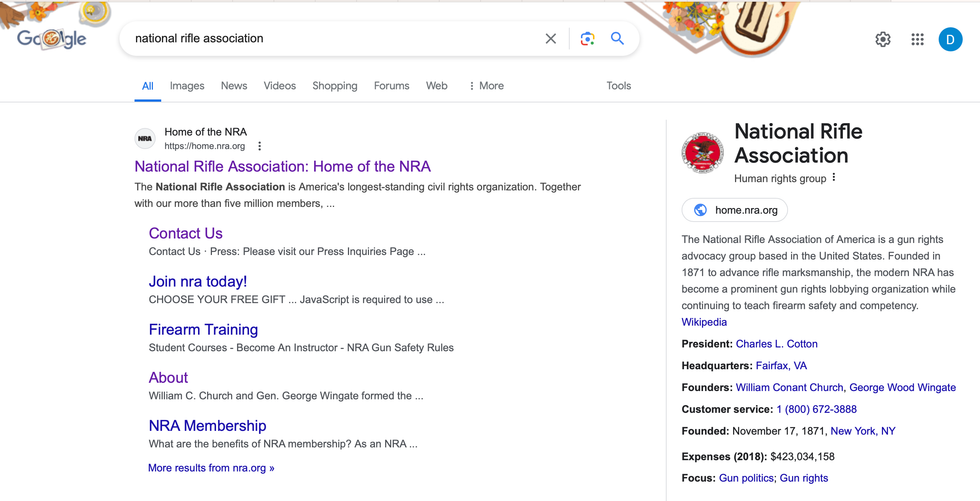 Google's "knowledge panel" for the National Rifle Association (right side) listed the organization as a "human rights group" until late last week. (Source: Google)
Google's "knowledge panel" for the National Rifle Association (right side) listed the organization as a "human rights group" until late last week. (Source: Google)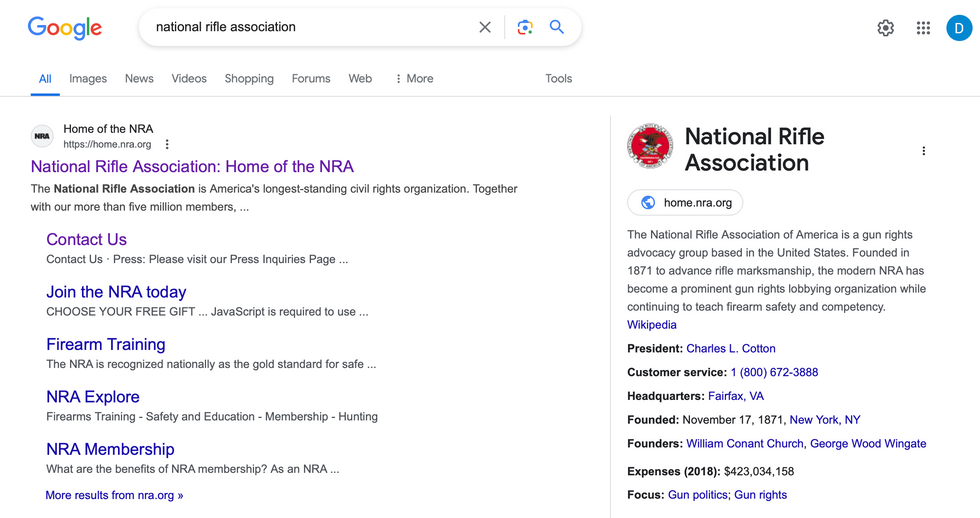 Current'y, Google's "knowledge panel" for the National Rifle Association (right side) does not list the organization as a "human rights group." (Source: Google)
Current'y, Google's "knowledge panel" for the National Rifle Association (right side) does not list the organization as a "human rights group." (Source: Google)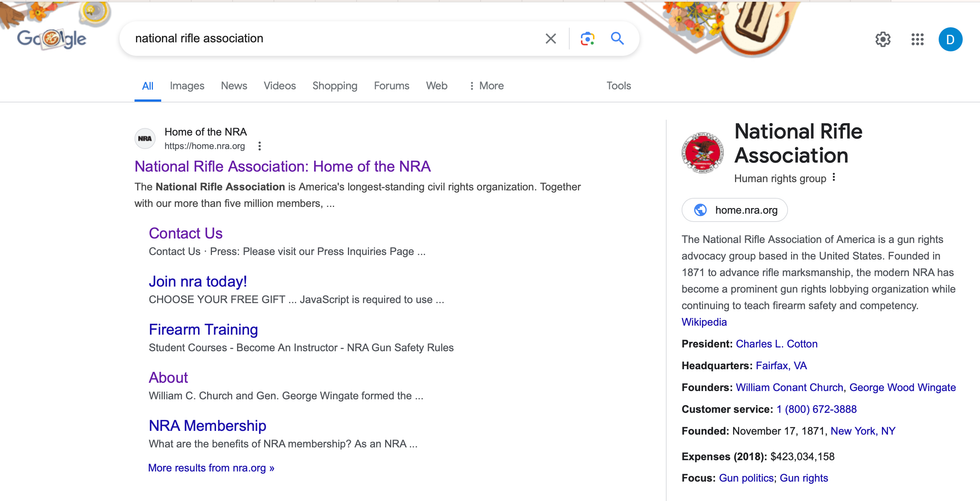 Google describes the National Rifle Association as a "human rights group" in a "knowledge panel" is displays for the pro-gun organization. Source: Google
Google describes the National Rifle Association as a "human rights group" in a "knowledge panel" is displays for the pro-gun organization. Source: Google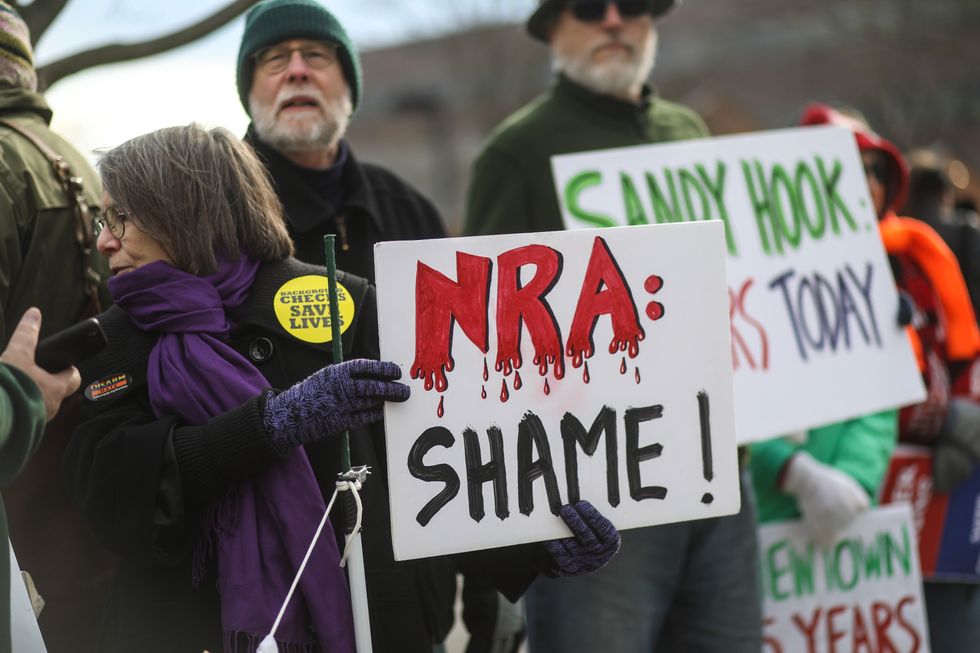 Protesters gather on Dec. 14, 2017, outside of the National Rifle Association headquarters in Fairfax, Va., for a vigil in remembrance of the 2012 Sandy Hook Elementary School massacre in Newtown, Conn. Nicole Glass Photography / Shutterstock
Protesters gather on Dec. 14, 2017, outside of the National Rifle Association headquarters in Fairfax, Va., for a vigil in remembrance of the 2012 Sandy Hook Elementary School massacre in Newtown, Conn. Nicole Glass Photography / Shutterstock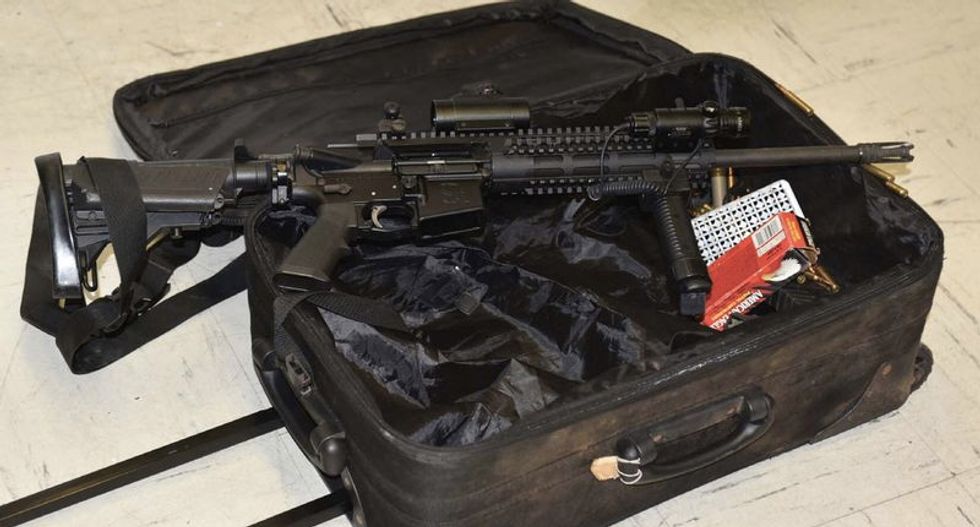 AR-15 with bump stock recovered by NYPD (Photo: NYPD)
AR-15 with bump stock recovered by NYPD (Photo: NYPD)